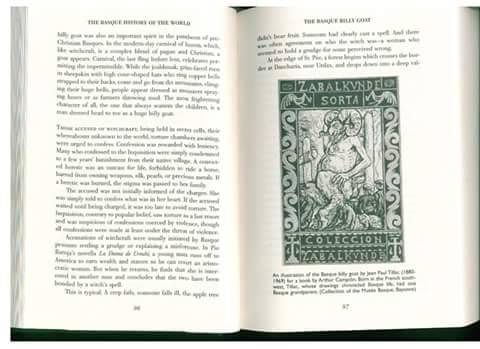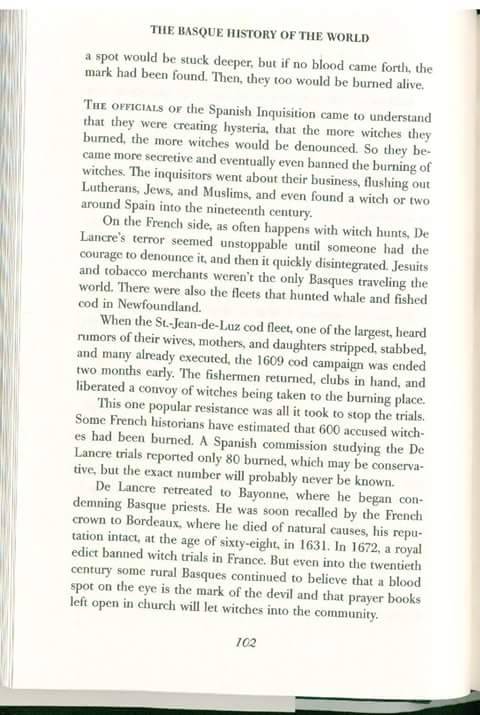and The Balance for Equilbrium Between ☆ stars-in-streams ♒
Don't wanna be here? Send us removal request.
Text

Caution: you may encounter skaters with txapela.
Sign seen in Irulegi.
29 notes
·
View notes
Photo

took the lie to make it right and thus now have this Eri Light.
Li-(e) ± (Ri)-ght ≡ Eri Light

throughout the hunt with my familiar, we’ve had to plunge into this river - The Eri Light of Truth.
Siriusly
3 notes
·
View notes
Text
"One cannot say that the elements are not the source of their intelligence."
0 notes
Photo

The Punishment of Loki
"No Man, when he hath lighted a candle, putteth it in a secret place, neither under a bushel, BUT ON A CANDLESTICK, that they which come in may see the light." - KJV Luke 11:33
There is no hiding from the peering eyes of others, but from those who cannot see as they, themselves, are lost in the dark.
When We ollie a gap where the point of traversion is above the elevation of the landing there is always a lip of some sort preceding the the edge of any pad of asphalt or concrete in where, within which, to come up short of the landing may bring cause to grief a skater.
When ones got their priorities straight there is no short coming of any landing. As ones equilibrium is honed then the landing is nice and smooth dependent upon a center of balance that is ought of overkill and laziness in an expression of ownership.
This is how we take pride in our work. Pride is not something to carry one as if everything will always work out in their favor because that is what they want or expect. When riding a skateboard one TAKES PRIDE in what they do - in that PRIDE is subservient throughout the equation of flight until rolling away in accomplishment, where within is the time, of which when one can be pride filled.
Here, i thought to get my priorities straight but i find that 'it is not me who never had their priorities straight'.
The people closest and nearest to me are spiritual ingrates. i will never try to escape nor try to hide, exactly as i never have.
In regard to that of which i have been judged by others, who think to subject me to their own little worlds as if i need be cast throughout their living hells, i have my reasons for never coming up short. When i Am not heard from, i Am taking pride in my work - to that of which many others interfere, sabotage, and disrupt; which is what i see has run rampant throughout the course of my life in this country - The United States.
ram·pant (răm′pənt)
adj.
1.
Extending unchecked; unrestrained:
a rampant growth of weeds in the neglected yard
.
2.
Occurring without restraint and frequently, widely, or menacingly; rife:
a rampant epidemic; rampant corruption in city government.
Though i never run off course, circumstance gives me reason to rearrange the content priority of an objective cause for effect by pulling weeds out of this prison of a living hell people call a free'd land.
What lies is bound unto the Air; that which you Air - VOCALS. Satan is always in the Air. Shackled, bound unto the Open Air.
Is that the same word that arose the other day? Vocals? Something along the LIIIIIIIINE.
0 notes
Text
Astronomy - The Ecliptic Path - The Great Year - Axial Precession - Earth's Orbit - Nutation
Terra (Planet Earth), Luna (Terra's Satellite/Moon), all the planets, galaxies, other phenomena and forms of being are seen throughout The Universe within view of Sol (The Sun) as celestial (from Latin caelestis: heavenly, pertaining to the sky).
stell: to fix in position, fashion, to affix,
stella: from Latin feminine word-formation -a: position to shine, spangle, star)
stellar: (from Latin word-formation -ar, -r: pertaining to, of the nature of - stella. Also 'pertaining to stars, star-like').
stellaris: (from Latin word-formation -aris: of the kind of, belonging to - stella. Also 'pertaining to a star, starry').
By use of energy, power, and combustion stell (stell (v.): to fix in position, from Old English stellan: to place, put, set) a system of function into The Universe as a whole through order and harmony seen to be The Cosmos (from Latinized form of Greek kosmos: order, good order, orderly arrangement).
The heavenly view of a starlit sky from Terra is Stellar (from Latin word-formation -ar: pertaining to, of the nature of - Stella: star. Stellar: being starry, star-like) and is encompassed as Stellaris (from Latin word-formation -aris: of the kind of, belonging to - Stella: star).

The planetary range of which Terra resides is Solar (from Latin word-formation -ar: pertaining to, of the nature of - Sol) and as a whole is encompassed as The Solar System, Solaris (from Latin word-formation -aris: of the kind of, belonging to - Sol).

Sol is centered within orbit of all the planets in an Ecliptic (from Greek ekliptikos: of an eclipse) position wherein hence the passage of starlight is obscured beyond each body of mass (e.g. a planet, satellite, or asteroid) in orbit upon their planes respectively called Ecliptic Planes.

An eclipse is the passing of a planet or satellite between a star, planet, or satellite and a vantage point wherein hence the passage of starlight is obscured beyond the celestial body toward the vantage point. In the event of a Lunar Eclipse a satellite passes through the shadow of a planet whereas during a Solar Eclipse either a planet or satellite passes within view of a star. In any configuration Sol is always in an ecliptic position irregardless of an actual eclipse.

Terra's orbit is in continuance of elliptic revolutions around Sol meaning there is an eccentricity expressed throughout Terra's orbit. The distance between Terra's nearest and furthest points in orbit is The Line of Apsides of which Terra is nearest to Sol at Periapsis and furthest at Apoapsis. The Line of Apsides resides within a gradual rotation of Terra's orbit which attributes to the planet's Orbital Precession.

Terra's rotation in orbit is on an axis which consists of two geographic poles; The North and South Poles of which Terra rotates Eastward. Terra is always in the Solar day, however the entire surface area of the planet rotates into Stellar night which attributes to any location on the surface of the planet the given effect of an Eastern Sunrise at dawn for daytime and a Western Sunset at dusk for nighttime.

Terra's axis of rotation is tilted. The tilted axis of her North and South Poles are coupled together within a center of balance upon Equator (from Latin aequare: make equal). One half of a sphere is a hemisphere. The Northern and Southern hemispheres of Earth share a common ground upon Equator of which a line between each hemisphere is respectively called The Equator (from English 1610 equator: terrestrial line midway between the North and South poles).

Terra's tilted axis of rotation is fixed within precession throughout the course of each consecutive year where in a year the planet's axial tilt exhibits a stable bearing. One revolution is a year where throughout the course of a year Terra completes 365.25 rotations of which each rotation is equivalent to one day.

The Eastern and Western hemispheres meld at
The Primary Meridian
which is the great circle arcing around the planet through the North and South Poles. Half of the great circle is
The Prime Meridian
which is on the Atlantic side of the planet opposite of
The Supreme Meridian
on the Pacific side of the planet.
The Prime
and
Supreme Meridians
conglomerate
The Global Day
.

The beginning and end of each Global Day is determined in the moment that The Prime Meridian centers in alignment with Sol as Earth rotates. On the opposite side of the planet the Eastern and Western hemispheres unite at the zero hour in the middle of the night at The Supreme Meridian.

Beginning at the 0° point of The Supreme Meridian at the zero hour of The Equator and arcing over the Northern region of the planet through the Arctic Circle to the 180° point of The Prime Meridian at the twelfth hour of The Equator

The change of seasons on Earth occur due to the planet's current location in orbit. The Southern Hemisphere is exposed to Summer as the southern pole comes and goes to and from a point closest to Sol while The Northern Hemisphere is in Winter.

The Northern Hemisphere is exposed to Summer as the northern pole comes to and goes from a point closest to Sol while The Southern Hemisphere is in Winter.

During the 365.25 days of the year there are four specific destinations in Earth's orbit which are:
The Northerly Equinox (Northern Spring/Southern Autumn)
The Northern Solstice (Northern Summer/Southern Winter)
The Southerly Equinox (Southern Spring/Northern Autumn)
The Southern Solstice (Southern Summer/Northern Winter)
During The Equinoxes Sol aligns with The Equator where due to Terra's rotation in position of orbit the northern and southern hemispheres of the planet share equal amounts of daytime and nighttime.
The Northern Solstice occurs at the moment when Earth's northern axial pole is closest to Sol whereas The Southern Solstice occurs at the moment when Earth's southern axial pole is closest to Sol. The Equinoxes are mid-Solstice occurrences.

During a year on Earth the amount of sunshine in a day notably increases and decreases throughout six solar events that correlate with Earth's location in orbit. Along The Line of Solstice the amount of daylight peaks in the middle of summer and the amount of nighttime peaks in the middle of winter.

Due to Earth’s axial tilt of 23.4° on The Ecliptic Plane, combined with Earth’s orbit around the Sun, the position of the Sun in the sky changes throughout the year. The Ecliptic Path is 49° thick at the maximum of what is known today. The image pictured below shows the region of The Celestial Sphere defined as The Ecliptic Path of the Sun which resides between the first and third red lines, the middle red line being adjacent to Earth's Celestial Equator, the green line representing The Ecliptic Plane on which Earth orbits the Sun, the blue pole depicting Earth’s axial tilt of rotation, and the stick-man in the middle representing planet Earth.

The apparent path of the Sun through the sky passes between Earth and a backdrop of stars across 12 constellations that reside within a band 20° thick called the Zodiac. Boundary lines of The Zodiac span 10° out from each side of The Ecliptic Plane of Earth’s orbit around Sol where through which the Sun, Moon, and planets are always seen to be present upon each of their own ecliptic planes in orbit.

Astronomers use The Celestial Sphere for navigational purposes, calculating distances between plotted points in the sky, and calculating the movement of such phenomena from vantage points on Earth. The Celestial Sphere is a manageable and useful tool of radial proportions which encircles Earth as a location for Sky exploration and Star mapping. The pole of Earth's orbit around Sol on The Ecliptic Plane is The Ecliptic Pole of The Celestial Sphere, of which Earth rotates on a tilted axis called The Celestial Pole, or in other words - The Ecliptic Pole is perpendicular to the ecliptic plane of Earth's orbit around Sol and The Celestial Pole on which the planet rotates is perpendicular to Earth's celestial equator.

Many different Northern Pole Stars cycle into view in alignment of The Celestial Pole as Earth orbits Sol throughout what is known as The Great Year which is approximately 25,714.28571432 Earth years. A single wobble of Earth takes place within The Great Year wherein a single Earth year the planet shifts .014° in the wobble along The Precessional Path of Earth's Rotational Axis.
In the following image, seeing as the red imagery denotes grid lines of The Celestial Sphere, The Precessional Path of Earth's Rotational Axis - in yellow, encircles The Celestial Sphere's Northern Ecliptic Pole. The action of which Earth's Northern Celestial Pole is known to cycle through all the possible Northern Pole Stars in a Great Year is called Axial Precession.

Here, in the next image, many of the Northern Pole Stars in The Great Year are depict. Draco is the constellation where The Northern Ecliptic Pole is located and Polaris currently resides within the vicinity of which Earth's Northern Celestial Pole is aimed. The red lines denote the position of The Ecliptic Grid aligned with Earth's ecliptic pole and the blue lines denote The Equatorial Grid aligned with Earth's celestial pole in The Celestial Sphere.

Everything in Existence presides within a state of precession - to this there are many forms of precession wrapped up in The Universe. Precession is the gradual shift in the axis of bodily rotation within an adjustable center of focus around an objective cause for effect such as the change of seasons. Such a focus regarding Earth's tilted axis is adjustable within 2.5° of the planet's minimum axial tilt toward the maximum tilt. Due to the adjustable tilt of Earth on the ecliptic plane the apparent path of the sun through the sky and the position of The Northern Pole Star are not permanently fixed except for the absolute moment in time with which they are viewed, but Our view of the sun will typically reside anywhere within a 2.5° thick band that can be visualized to wrap around the planet. Whereupon this portion of the ecliptic plane, the part that intersects with the surface of Earth, 1.25° and -1.25° declination from the ecliptic plane comprise an area of a 2.5° thick band that can be seen as The Solar Ring of Earths rotational engagement upon The Ecliptic Plane of Earth's orbit.

The position of celestial phenomena in the sky can be located by use of an Equatorial Coordinate System in using what is called the right ascension throughout a span of 24 hours and the declination of either (+) Northern and (-) Southern directions. For The Right Ascension we use the 60 minutes in an hour and the 60 seconds of each minute. For The Declination We use a method of measurement pertaining to degrees where there are 60 arcminutes assigned to each degree and 60 arcseconds in each arcminute.
In Astronomy the symbol for an arcminute is the prime (') and the symbol for the arcsecond is the double-prime ("). At the Ecliptic and Equatorial Planes of either The Ecliptic Grid or The Equatorial Grid the declination is measured in the Northern 90 or the Southern -90 degrees on the vertical planes arcing around The Celestial Sphere. The second and minute of each hour are used to calculate and measure distance on the horizontal planes in Right Ascension beginning at The 0° Equinox or Northern Vernal Equinox during the month of March.

Earth's slightly adjustable axial tilt shifts 47" - arcseconds (47/3600ths of a degree), as measured using a grid in our Celestial Sphere upon the movement of a backdrop of stars, per century and is currently, at the time of this writing, decreasing in the direction toward the minimal tilt within what is called the 'nutation' (from Latin: nūtāre, to nod) of Earth's rotation around a tilted axis in precession of The Great Year.

There is also what is referred to as, in what may seem to be, the free nutation of Earth on a tilted axis on The Celestial Pole in precession - noted throughout the course of shifting vantage points on Earth's surface. As Earth's tilted axis resides within precession of The Great Year the mantle of the planet nods on The Celestial Pole. Due to the free movement of Earth's mantle around the molten nickel and iron core the gravitational forces of Sol and Luna, in a combination with Planet Earth's shape which is not perfectly spherical, attribute to the effect of a freely nodding planet upon a tilted axis.

In a two dimensional image of Earth the distance between the North and South Celestial Poles is shorter than the distance measured across the Equatorial Plane of the planet. The subtle difference between Polar and Equatorial diameters combined with the tilted axis of Earth's rotation and the gravitational forces between Sol and Luna contribute to the free nutation of Earth's mantle.

*Images are shared, some modified, from web based search*
#Earth#Sol#Solaris#Stella#Stellaris#equinox#Astronomy#The Great Year#Axial Precession#The Ecliptic Path#Orbit#Eclipse#Science#Existence#Solar System
45 notes
·
View notes
Photo










Pages 1 - 10 of “The Basque Billy Goat” - and the pain in the footsteps of Catholicism, which is the excommunication of faiths and beliefs that were deemed heathenous and that forced followers of The Goddess Mari into hiding within ‘The Mother Mary’ cults throughout The Catholic Church
**pages 11-12 were already tumbled in a post that's separate from these first 10 pages of the article**
10 notes
·
View notes
Photo



Pages 11-12 of “The Basque Billy Goat” - and the pain in the footsteps of Catholicism, which is the excommunication of faiths and beliefs that were deemed heathenous and that forced followers of The Goddess Mari into hiding within ‘The Mother Mary’ cults throughout The Catholic Church.
*this post must tumbled before the first 10 pages of the article. The first 10 pages are next up.
1 note
·
View note
Text
The Great White Stagg - Lighting The Hunters Way
When men have many mouths to feed they rely on the sight of The Great White Stag because they may always lead men of the hunt on a journey to the other deer of whom are acceptable to kill. Killing any white stag may be an expression of one's own short sight - wherein deprived of a plentiful hunt one who disregards the purpose of following the white stag, to instead kill him, comes up short in feeding 'their families' whom are all families (other hunter’s families); in taking the sport away from other hunters who know that following the white stag will bring them to other deer. Men who do such a thing, as to kill the white stag, deprive other's families from the necessary sustenance needed to raise children whilst robbing other hunters of a life on the hunt in a journey throughout the woods.
3 notes
·
View notes
Text
"The realization hath occurrence whilst estranged as all the stars within my range.. .
i Am The Center of The Universe."

4 notes
·
View notes
Photo






Volcanoes:
1-Puyehue in Santiago, Chile
2-Mount Shinmoedake in Japan
3-Eyjafjallajokull in Iceland
4-Eyjafjallajokull in Iceland
5-Puyehue in Santiago, Chile
6-?
63 notes
·
View notes














